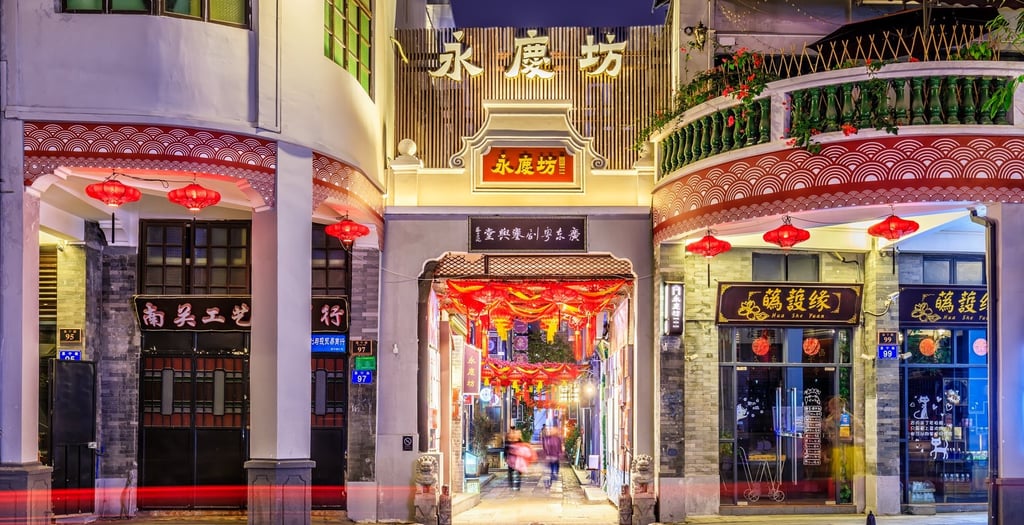Use Desktop for Better Experience
Guangzhou Yongqingfang: Exploring Coexistence of History and Commerce (Excerpt)
This report is to (1) analyse the influence of redeveloped Yongqingfang on the neighbourhood and community; (2) compare the case with another urban development project in Hong Kong, namely Lee Tung Street; (3) provide recommendation to explore possibility of coexistence of history and commerce in urban revitalisation.
SOCIAL
Ryan Cheng
8/26/20247 min read
Introduction
Background of the City
Guangzhou, also known as "Yangcheng" or "Huacheng," is the capital of Guangdong Province in southern China and one of the largest cities in the country. With a history spanning over 2,000 years, Guangzhou is the political, economic, technological, educational, and cultural center of the Pearl River Delta. It is also one of China's leading cities in terms of opening up to the outside world. Guangzhou boasts a rich history and cultural heritage, characterized by distinctive Lingnan cultural features (Hong Kong tourism board, n.d.). As one of China's main commercial and manufacturing hubs, Guangzhou holds a significant position in the global economy, particularly excelling in trade, exhibitions, and logistics.
Urban Development Project
Yongqingfang is a national 4A-level tourist attraction (creative park) located in Guangzhou's Liwan District. (Greater Bay Area Homeland Youth Community Foundation, n.d.). It stretches from Enning Road in the south to the vicinity of Lychee Bay and the Cantonese Opera Art Museum in the north. The creative park was formerly known as Yongqing Street, Yongqing First Alley, and Yongqing Second Alley. During the Qing dynasty, it served as an important treaty port, linking eastern and western China. Renowned for its beautiful streetscape and historical attractions, such as the Cantonese Opera Museum, it is one of the most well-preserved old districts in Guangzhou. However, since the 1950s, the entire district has experienced significant decline. Fortunately, in 2015, Yongqingfang becomes one of the micro-transformation pilot projects in response to recent urban redevelopment policy in China. (Wang et al., 2022) This model emphasizes gradually improving and enhancing an area through small-scale, dispersed interventions without disrupting the existing social structure and cultural traditions. This strategy not only helps preserve the historic characteristics of neighbourhoods but also promotes the sustainable development of the regional economy.


Influence on the Neighbourhood and Community
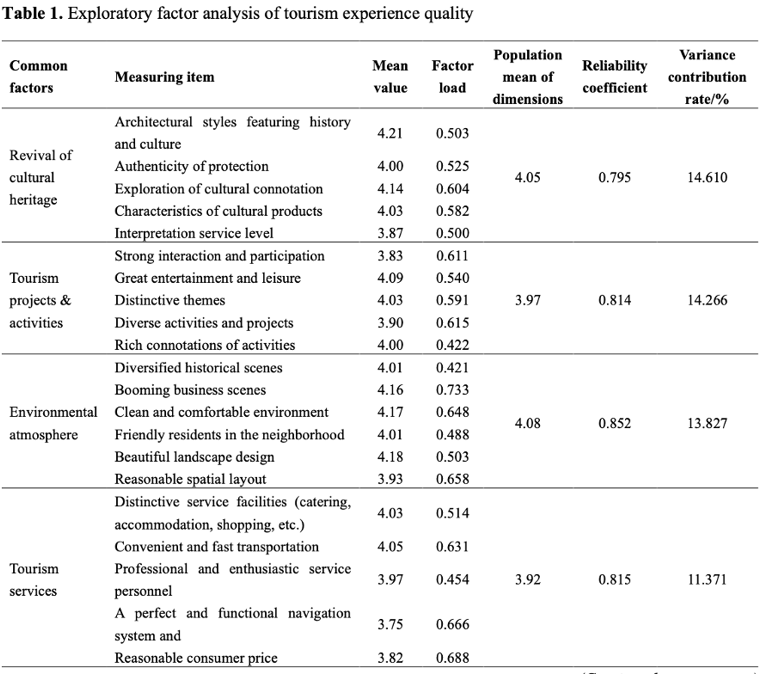

The Yongqingfang development project in Guangzhou has yielded substantial impacts, reshaping the historic district both physically and socially. One of the most prominent benefits is the preservation and revitalization of cultural heritage. By maintaining the original urban lanes and neighbourhoods and restoring historical sites such as the Xiguan Arcade and Xiguan Celebrity Blocks, the project has succeeded in retaining the cultural essence of the area. This approach has preserved the architectural styles and historical authenticity and revived the cultural connotations associated with these sites. As a result, Yongqingfang has become a cultural hub to provide an enriched cultural experience for both locals and visitors. (Tan, et al. 2022)
Another impact is the enhancement of the environmental atmosphere. The project has improved the public infrastructure, including the reorganization of tangled wires and the renovation of facades, to make the area cleaner and more aesthetically pleasing. The creation of public spaces and the promotion of commercial development have given a new life into the district where suitable for living, leisure, and tourism. The introduction of modern industries focusing on cultural creativity has further bolstered the economic vitality of the district. Thus, numerous tourists and businesses are attracted. (Tan, et al. 2022)
*Analysis is based on the survey result below (Tan, et al. 2022)
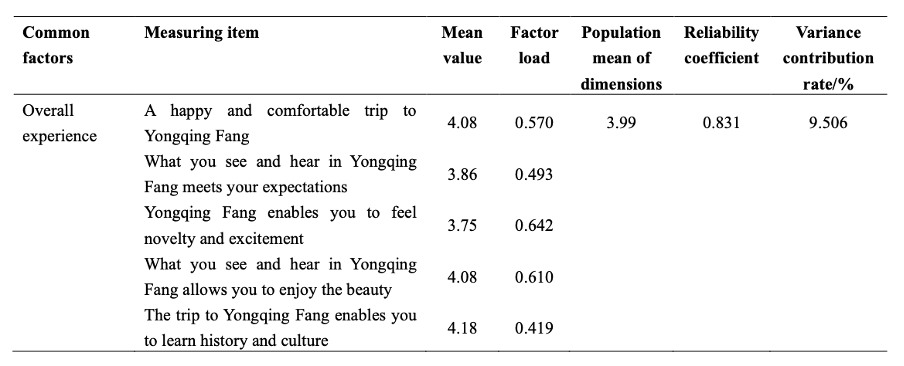

However, the project has also faced challenges and criticisms. I interviewed Liu Shi Ying, a local student from a university in Guangzhou, via WeChat.
Liu Shi Ying shared her experience visiting Yongqingfang. She enjoyed exploring the redeveloped historical buildings and the Moon Bridge. However, she expressed disappointment in the commercialisation, noting the prevalence of chain stores and the artificially altered interiors of the buildings. While the exterior of Yongqingfang maintains a historical appearance, there is no difference of the interiors from modern shopping streets. This reduces the authenticity of the visiting experience.
Liu also mentioned that the renovation of Yongqingfang came from the local opposition to demolishing Enning Road. The preservation effort of keeping the buildings intact turned a space that feels more like a trendy, tourist-friendly area. For Liu, Yongqingfang seemed more like a packaged, commercial destination than a real reflection of Guangzhou's history.
This is common that preservation and modernization cannot be balanced in urban revitalization projects. This turns out to a loss of the original historical essence that makes such areas unique. The commercialization of Yongqingfang has led to a shift in the local culture and social dynamics. Long-time residents may feel isolated by the influx of tourists and the proliferation of chain stores. They no long familiar with where they live as the unique local businesses and traditional lifestyles that once defined the area are overshadowed. As a result, the shift creates a sense of loss among community members, because the authentic cultural essence of their neighbourhood is diluted by modernization. Although the exterior of Yongqingfang maintains a historical façade, the interiors of many buildings have been heavily altered to accommodate commercial needs. This contrast between the old and the new can create a dissonance that detracts from the authentic experience for both residents and visitors, potentially undermining the historical and cultural significance of the area.
Comparison with Lee Tung Street
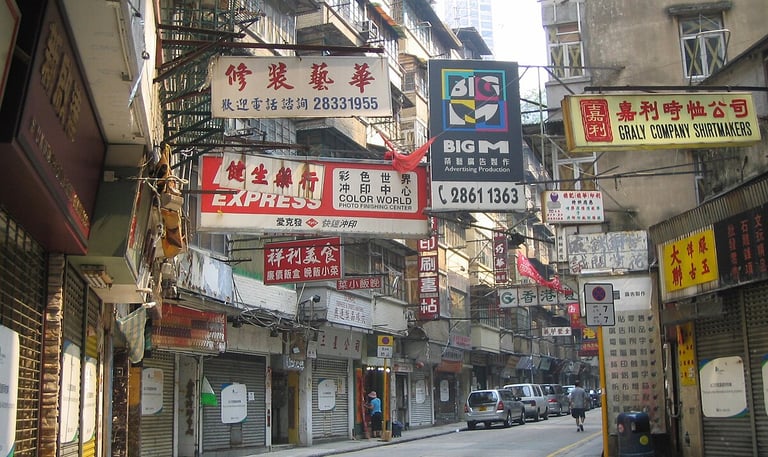

The cultural impact of the Lee Tung Street redevelopment project was profound. Known as "Wedding Card Street," Lee Tung Street was historically a vibrant hub for the printing industry, specializing in wedding invitations and other printed materials. (Huang, 2009) This industry was not only economically significant, but also important for community’s cultural heritage. The redevelopment project may lead to the loss of unique cultural identity, because of demolition of existing buildings and displacement of residents and businesses.
Firstly, the demolition of the traditional printing shops affected Hong Kong's cultural and historical landscape. These shops were more than just businesses as they were cultural landmarks that represented Hong Kong’s rich history of print culture. The loss of these establishments means future generations will no longer have direct access to this part of their heritage, and the cultural fabric of the area has been irreversibly altered.
Secondly, the redevelopment project disrupted the social networks and community ties that had been built over decades. (Han, 2018) For many residents and business owners, Lee Tung Street was not just a place of work or residence. It is a community where social interactions and relationships built. The forced displacement scattered these networks, making it difficult to maintain the same level of community cohesion. This social fragmentation impacts the cultural continuity of the area - the shared experiences and collective memories that bind a community together are vanished.
Moreover, the new development's focus on modern commercial and residential spaces contributed to the homogenization of the urban landscape. (Han, 2018) The unique character of Lee Tung Street - small, locally-owned businesses and traditional architecture, has been replaced with high-rise buildings and shopping malls that lack the cultural elements that once defined the area. This shift diminishes the cultural diversity and richness of the city, leading to a loss of local identity.
Both projects highlight the common issue in urban revitalization that economic benefits of urban revitalization are achieved at the expense of the original local culture. In Yongqingfang, the commercialized interiors of historical buildings and the prevalence of chain stores reduce the authenticity of the experience. Similarly, in Lee Tung Street, the redevelopment led to the loss of unique cultural landmarks and a homogenized urban landscape.
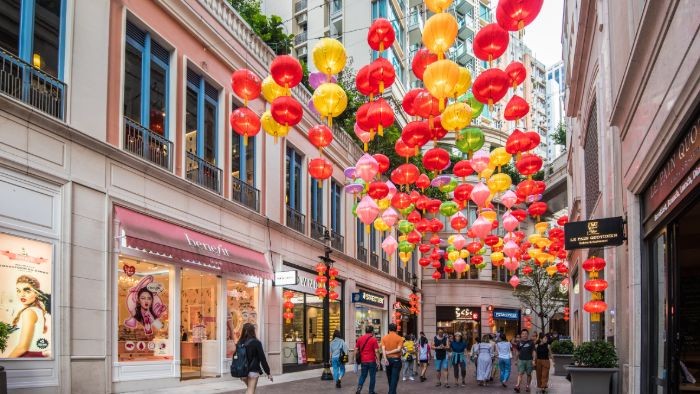

Recommendation
The policy of micro-transformation in Yongqingfang emphasizes public participation but falls short in practice. Interaction between local residents and the state-market coalition is limited. Residents are often excluded from planning and construction decisions as local states grant planning permissions without needing community agreement. Additionally, there is a lack of detailed guidelines to define community rights and establish communication channels, rendering residents' involvement largely tokenistic. (Wang et al., 2022)
Interviews conducted in 2017 revealed that only 22 households remained during the transformation, with issues such as inadequate compensation and complex property ownership hindering their relocation. (Wang et al., 2022) The primary aim of micro-rehabilitation is to generate jobs, change the urban image, and promote local business rather than improve residents' living quality. Historic dwellings often had superficial renovations, and those not facing main alleys received no attention. Residents who disagreed with the renovation scheme because they faced significant issues. For instance, reduced natural light and unresolved complaints about construction impacts.
To address social conflicts associated with micro-transformation projects, a framework for regular community meetings and forums is proposed. Regularly and well-publicised gatherings should be held to ensure maximum participation from all stakeholders, including local residents, business owners, developers, and government representatives.
Residents can voice their concerns by sharing their experiences, and propose solutions in community meetings and forums. Therefore, the development project aligns more closely with the needs of the community. Trust can also be built between the residents and the entities responsible for the redevelopment to foster a sense of collaboration. Moreover, these forums can serve as educational sessions that residents are informed about the specifics of the development plans, such as timelines and potential impacts. In addition, follow-up meetings should be held to discuss further adjustments or considerations.
Furthermore, sub-committees or working groups within forums are recommended to be established for addressing specific issues in detail. These groups can be distributed to be responsible for various aspects of the redevelopment. The aspects include housing, cultural preservation, environmental impact, and economic opportunities. By involving residents directly in these focused discussions, the project can lead to better outcomes from diverse perspectives and local expertise.



